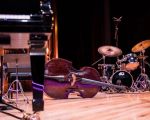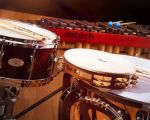- 1 - Understanding - Guitar Effects Pedals
- 2 - Types - Effects Pedals - Uses
- 3 - Setting Up - Effects Pedals
- 4 - Tips - Using Effects Pedals Effectively
- 5 - Where To Find - Quality Pedals - Beat Trigger
1. Understanding Guitar Effects Pedals and Their Impact on Your Sound
Guitar effects pedals are essential tools that allow guitarists to shape and enhance their tone beyond the natural sound of their instrument. These pedals modify the audio signal in various ways, introducing effects like distortion, delay, reverb, and modulation. Understanding how these pedals work and interact is the first step toward crafting a unique and expressive sound.
Whether you’re playing blues, rock, jazz, or experimental music, effects pedals open up endless sonic possibilities, enabling you to convey emotion, texture, and dynamics in your playing.
2. Types of Guitar Effects Pedals and How to Use Them
2.1 Overdrive and Distortion Pedals
These pedals add grit and sustain to your guitar tone. Overdrive simulates the warm breakup of a tube amp, perfect for blues and rock, while distortion pedals create heavier, more aggressive sounds often used in metal and punk genres.
2.2 Delay and Reverb Pedals
Delay pedals echo your notes, adding space and depth, whereas reverb pedals simulate ambient environments, from small rooms to vast halls. These effects can make your guitar sound bigger and more atmospheric.
2.3 Modulation Pedals
Chorus, flanger, and phaser pedals create sweeping, shimmering textures by altering the pitch or phase of your signal. These add movement and complexity to your sound, often heard in pop and psychedelic music.
2.4 Compression and EQ Pedals
Compression smooths out your playing dynamics for a more consistent volume, while EQ pedals allow precise control over frequency bands to tailor your tone.
3. Setting Up Your Effects Pedals for Optimal Performance
3.1 Signal Chain Order
Proper pedal order is crucial. Typically, tuners and compressors come first, followed by overdrive/distortion, modulation effects, delay, and reverb last. This order helps maintain clarity and effectiveness of each effect.
3.2 Power Supply and Cabling
Using a reliable power supply prevents noise and ensures consistent pedal operation. High-quality cables minimize signal loss and interference.
3.3 Experimentation
Don’t hesitate to try different orders or combinations. Many iconic sounds were discovered by experimenting with unconventional setups.
4. Tips for Using Guitar Effects Pedals to Enhance Your Sound
4.1 Start Simple and Build Gradually
Begin with one or two pedals and master their use before adding more. This approach helps you understand each effect’s impact on your sound.
4.2 Use Effects to Complement Your Playing Style
Choose pedals that enhance your musical expression rather than overpowering it. Effects should serve your creativity.
4.3 Maintain Your Gear
Regularly check connections and keep pedals clean to avoid technical issues during performances.
4.4 Learn from Professionals
Studying how famous guitarists use effects pedals can inspire your own setup and techniques.
5. Where to Find Quality Guitar Effects Pedals: Beat Trigger
For those looking to expand their pedal collection or upgrade their gear, Beat Trigger offers a comprehensive selection of the best guitar effects pedals. From classic overdrive pedals to innovative modulation units, Beat Trigger provides expert reviews, detailed specifications, and trusted customer support.
Whether you are a beginner or a seasoned pro, Beat Trigger is your go-to source for reliable, high-quality pedals that will enhance your sound and inspire your musical journey.








